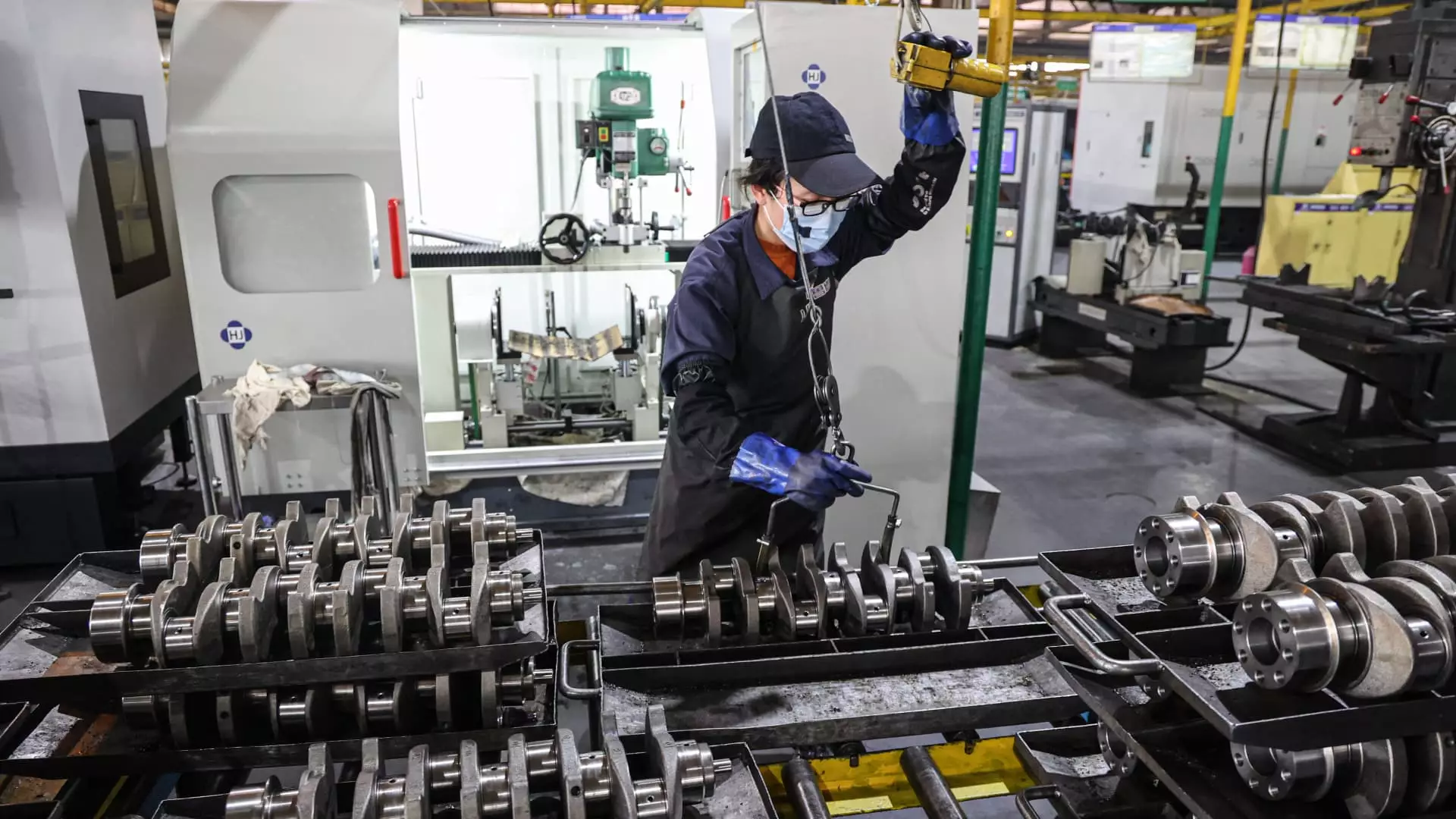In an extraordinary twist, China’s industrial profits have exhibited a surprising surge, rising for the second consecutive month in April despite dire predictions regarding U.S. tariffs and ongoing deflationary pressures. This upward tick—an impressive 3% year-on-year increase—suggests a semblance of resilience in a landscape littered with obstacles. However, a deeper examination exposes the fragility behind this growth. As we witness these profits climb, we must resist the temptation to celebrate prematurely. The slight improvement, having accelerated from March’s 2.6%, is merely a staircase leading to a precarious cliff.
What enhances this layered complexity is the backdrop of punitive tariffs imposed by the Trump administration, a staggering 145% on imports from China. While the Chinese economy manages to find alternative markets, the threat of a trade war looms larger than ever. The so-called truce brokered in Geneva, where both nations agreed to reduce tariffs—52% for U.S. goods and 32.6% for Chinese imports—has done little to assuage the fundamental challenges facing these intertwined economies.
The Dichotomy Between State and Private Enterprises
The statistical divide between state-owned enterprises and private firms serves as a stark indicator of the market realities in China. While profits for state-owned enterprises plummeted by 4.4% during the first four months of the year, private businesses enjoyed a 4.3% rise. This discrepancy raises crucial questions regarding efficiency and adaptability in what is arguably a rapidly transforming economic environment. Economically speaking, private firms have adapted with agility that their state counterparts seem to lack—a critical insight into not just current challenges but also future growth trajectories.
This disparity is echoed in sector performance. The mining industry faced a catastrophic 26.8% decline in profits, while sectors like high-tech manufacturing saw an impressive 9% increase. The latter’s growth can be attributed to innovation in biopharmaceuticals and aircraft manufacturing, illustrating a bright spot in an otherwise struggling industrial sector. The evidence suggests that the engine of China’s economic engine is increasingly relying on high-tech advancements, rather than traditional manufacturing, which is ill-equipped to navigate the labyrinth of modern market demands.
Illusions of Stability in the Face of Declining Consumer Demand
While the narrative of growth appears compelling at first glance, it is crucial to examine underlying macroeconomic indicators. Retail sales growth has decelerated to a dismal 5.1%, further underscoring the hazardous imbalance of supply and demand in the economy. This scenario suggests an alarming trend; businesses may be flourishing on paper while consumers are tightening their belts, reflecting a precariously imbalanced economy driven by paper profits rather than genuine consumer confidence or purchasing power.
Weining Yu, with the National Bureau of Statistics, eloquently captures this duality when he discusses the “constraints such as insufficient demand and declining prices” that still dominate the market. Even with the apparent resilience shown by some sectors, the specter of economic uncertainty is palpable and could unravel the very fabric of this fragile economic recovery at any moment.
The Future: A High-Stakes Gamble
The cumulative statistics of a 1.4% rise in industrial profits for the year’s first four months might paint a rosy picture for policymakers, but beneath this veneer lies a high-stakes gamble. For the Chinese government, maintaining the façade of economic stability is paramount, especially in a global climate where perceptions can shift as rapidly as the winds of trade policy.
Moreover, it places immense pressure on local governments and corporations to innovate, adapt, and diversify—virtues that have thus far been met with mixed results. Will they have the fortitude to pivot effectively before they succumb to the external pressures mounting on them?
While China’s industrial sector showcases remarkable statistics indicative of growth, they come with serious caveats. Whether this resilience will transition into a sustainable recovery or remain a mirage is a question only time can answer, but the stakes have never been higher.



Leave a Reply